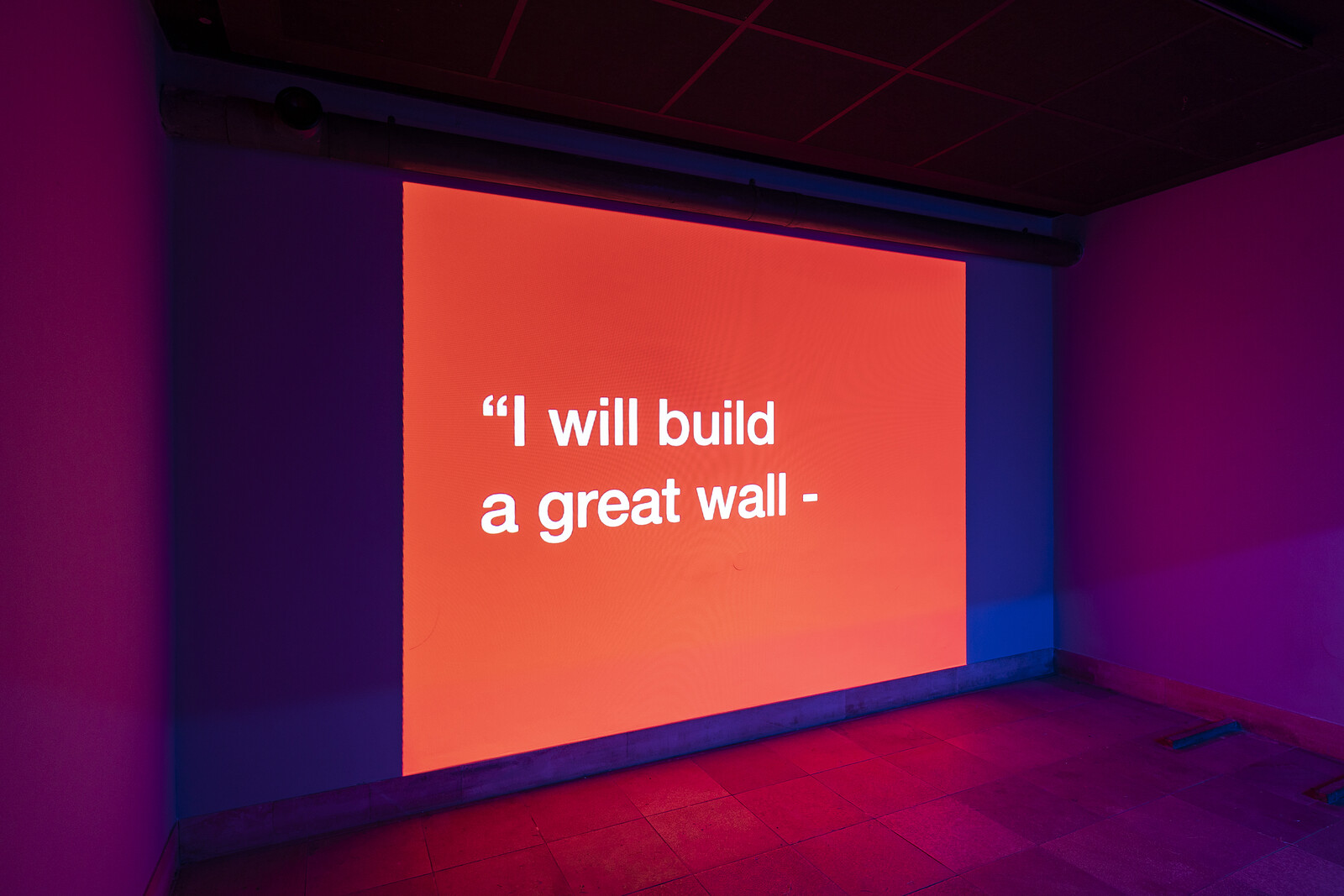Categories
Subjects
Authors
Artists
Venues
Locations
Calendar
Filter
Done
July 26, 2022 – Review
Tony Cokes’s “Fragments, or just Moments”
Harry Burke

Walking into “Fragments, or just Moments” at Haus der Kunst is like walking into a club. Blue lighting animates the subterranean LSK Gallery, while atmospheric techno—the audio of Tony Cokes’s Some Munich Moments 1937–1972 (2022)—thuds in the corridor. The effect is uncanny, not least as the bunker was formerly an air raid shelter created by the National Socialist party—as three shower cubicles by the entrance, among other eerie details, testify.
In this retrospective, which spans this venue, the Kunstverein München, and two public sites, Cokes stages a haunting conversation with Munich’s past. 1937 is the year that the Haus der Kunst, designed by Hitler’s “master builder” Paul Troost, opened its doors. In 1972, the city’s Olympic Games, which West Germany hoped would repair its international standing, were overshadowed by the murder of eleven Israeli athletes by affiliates of the Black September Organization, a Palestinian militant group. In the postwar years, Germany undertook a determined program of de-Nazification, and today is reckoning with its colonialism.
In a change of tune from Cokes’s celebrated text animations of the last two decades, which mostly shun representational imagery, Some Munich Moments (different edits of which appear at each venue) features scenes of a comprehensively …
April 12, 2018 – Review
Alexandre Estrela + João Maria Gusmão and Pedro Paiva’s “Lua Cão”
Patrick J. Reed

Watching João Maria Gusmão and Pedro Paiva’s Cowfish (2001) is harrowing. The poor fool struggles on a plate and then pukes a little water before going still. Any viewer would assume the film’s subject—a cowfish—dies, but in the end its survival remains unclear. Death is withheld by a flicker and a loop back to the start. Gusmão and Paiva prefer the contemplative over the didactic.
Compare to Alexandre Estrela, their contemporary in the Lisbon moving-image scene, who revels in combining video, sculpture, and text. His projects—some of which are included in the show, alongside those of Gusmão and Paiva—possess stroboscopic effects and hypnotic sounds that challenge conventional legibility.
Given their aesthetic and philosophical differences, it would seem the artists’ orbits opposed fruitful alignment, yet, under the auspices of “Lua Cão,” they form a rewarding trine that places their respective works in dialogue. Translated from the Portuguese as “Moon Dog,” the title refers both to an optical phenomenon, in which refracted light creates a halo around the moon, and, via a nod to the American composer Moondog (1916–1999), idiosyncratic third stream jazz—rare essences woven into a phenomenal collaboration.
Described by its creators as an “immersive moving-image experiment,” “Lua Cão” is tailored to the elegant …